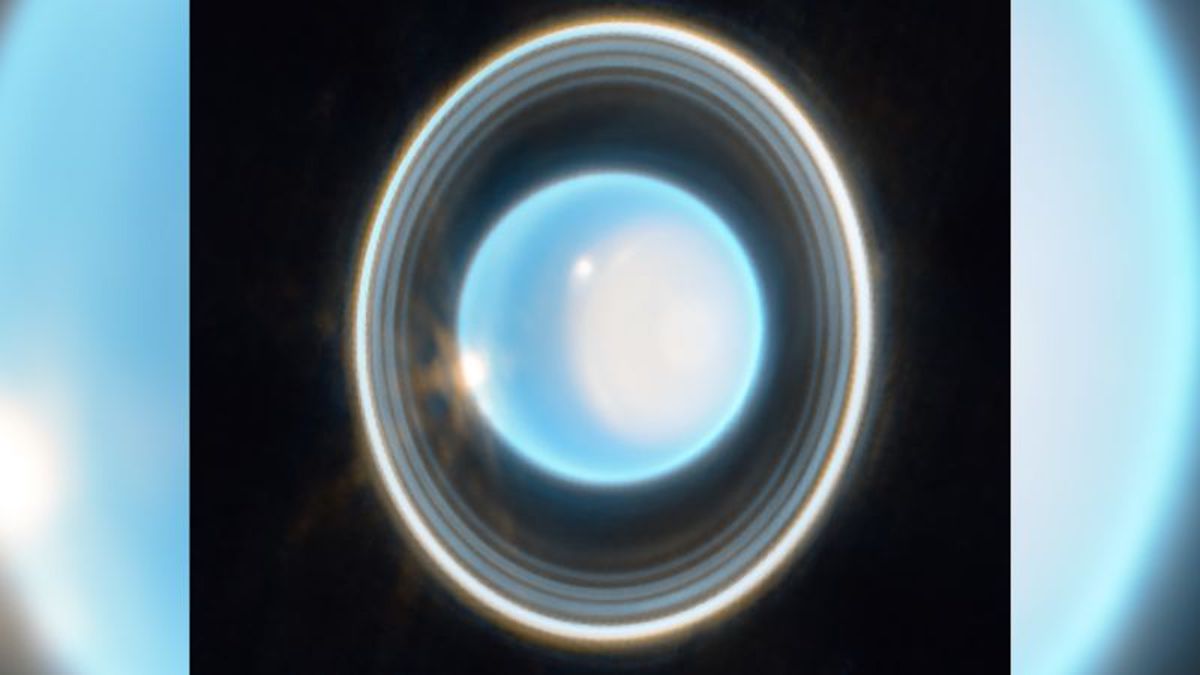(CNN) – The James Webb Space Telescope (JWST) has captured a stunning new image of ice giant Uranus, showing nearly all of its thin, dusty rings.
NASA said the image is evidence of the telescope’s great sensitivity, as the faint rings were only captured by the Voyager 2 spacecraft and the W. Keck Observatory on Maunaki, Hawaii.
Uranus has 13 known rings, 11 of which are visible. In the new look of Webb. Nine rings are categorized as major rings, while the other two are difficult to capture due to their dusty composition and weren’t discovered until the Voyager 2 flyby in 1986. Two other faint outer rings were also detected in the last image. In 2007 photos I took NASA’s Hubble Space TelescopeScientists hope that Webb will catch them in the future.
“The planet’s ring system tells us a lot about its origins and formation,” said Dr. Naomi Roe-Gurney, a postdoctoral research scientist and Solar System Ambassador for the Webb Space Telescope at NASA’s Goddard Space Flight Center in Greenbelt, Maryland, by email.
“Uranus is such a strange world, with its lateral tilt and lack of internal heat, that any clues we can get about its history are invaluable,” he added.
Scientists expect that future Webb telescope images may capture all 13 rings. Rowe-Gurney also hopes the telescope will discover more about the composition of Uranus’ atmosphere, helping scientists better understand this unusual gas giant.
An image of Uranus (left) taken by Hubble in November captured the planet’s bright polar cap, while a recent Webb image showed more detail, with a slight brightness in the center of the cap. (NASA/NASA)
The space observatory’s Near Infrared Camera (NIRCam) can detect infrared light that would otherwise not be visible to astronomers.
“JWST gives us the ability to look at both Uranus and Neptune in a whole new way because we’ve never had a telescope of this size looking in the infrared,” said Rowe-Gurney. “Infrared can show us new depths and features that would be hard to see from here with the atmosphere in between. (Those) depths were invisible to visible-looking telescopes like Hubble.”
More about Uranus
Located about 3 billion kilometers (1.8 billion miles) from our sun, Uranus takes 84 years to complete one complete revolution. The planet is unique in that it tilts to one side, which causes its rings to appear vertical, unlike Saturn’s horizontal ring system.
The north pole of Uranus is surrounded by a bright haze that NASA previously reported appears when the pole is exposed to direct sunlight during the summer. The atmospheric haze appears to be getting brighter every year, according to the space agency. With the exact mechanism behind the unknown haze, scientists are studying the polar cap using telescope images like this new web image.
in the original photos taken by the Voyager 2 mission from Uranus The planet appeared as a blurred blue ball. However, in this new Webb image, similar to other recent Hubble Space Telescope images, storm clouds can be seen at the edge of the polar cap. Uranus’ tilt causes extreme seasons and this stormy weather, and scientists have been monitoring and documenting changes over time by comparing different images from telescopes.
In images taken by the Hubble Telescope in 2014 and 2022, the increase in the size and brightness of the north polar cap of Uranus is evident. Bright haze covers the area in the later image.
NASA’s Hubble Space Telescope also captured Uranus’ bright white polar cap in November, brightening the haze compared to images from previous years. Webb’s new image shows the polar cap in greater detail than seen in the Hubble image, with a subtle glow in the center of the cap and clearer storm clouds visible around the edges.
Uranus is identified as One of the priorities of the study in 2022 by the National Academies of Sciences, Engineering, and Medicine. “Additional studies of Uranus are currently underway, with more planned in Webb’s first year of science operations,” said a NASA statement after the announcement.

“Proud web fanatic. Subtly charming twitter geek. Reader. Internet trailblazer. Music buff.”

:quality(85)/cloudfront-us-east-1.images.arcpublishing.com/infobae/TEQF6EONZRFGLLLDIDD4L2O4EE.jpg)

:quality(75)/cloudfront-us-east-1.images.arcpublishing.com/elcomercio/XU32LRAEZFDDPNVHLFU3CKVBYY.jpg)



More Stories
How to create 3D videos with my iPhone, it will be very useful even for your business
NASA discovers an anomaly in the Earth’s magnetic field that could have serious consequences for humans
Can the Earth be divided into two parts?